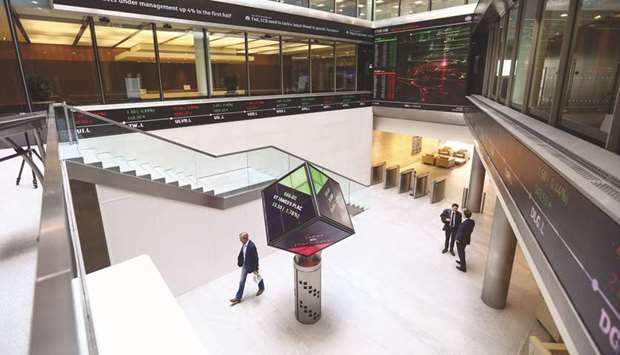Stock markets were mixed yesterday after US Federal Reserve chief Jerome Powell kept the door open to an interest rate cut this month.
At the close of trade in Europe, both the blue-chip CAC 40 index in Paris and the FTSE in London were more or less unchanged, but the DAX 30 in Frankfurt fell on profit-taking.
The FTSE 100 closed 0.08% down at 7,530.69 points, the CAC 40 ended 0.08% down at 5,567.59 points and the DAX 30 finished 0.5% down at 12,373.41 points, while the EURO STOXX 50 lost 0.2% at 3,501.52 points.
Nevertheless, on the other side of the Atlantic, Wall Street was firmly in the black as Powell pointed to ongoing uncertainty about trade as a drag on US growth.
Powell did not explicitly say there would be more cuts in interest rates.
But in his remarks to the House Financial Services Committee, he noted the Fed in June announced it “would act as appropriate to sustain the expansion”. That sent the S&P 500 surging past 3,000 points for the first time.
Edward Moya, analyst at Oanda, said Powell’s comments underlined the clouds hanging over the economy.
“The economic outlook has not improved in recent weeks and that pretty much signals a rate cut” at the Fed’s policy meeting on July 30-31, he said.
On the foreign exchange markets, the pound rebounded from more than two-year lows versus the dollar meanwhile, as official data showed Britain’s economy returned to growth in May, with gross domestic product expanding by 0.3% following a contraction of 0.4% in April.
In Britain, “the pound caught some bid as the UK economy bounced back in May following the decline in April,” noted Neil Wilson, analyst at Markets.com.
“But traders need to be careful as Brexit uncertainty remains the major drag on sterling.”
Fed officials have helped spur a rally in world equities in recent weeks by taking an increasingly dovish or subdued tone regarding monetary policy, fuelling expectations they would cut borrowing costs sharply to support a stuttering economy.
Hopes for a deep reduction seemed to have been set back on Friday by data showing the US created far more jobs than expected in June.
But Powell told US lawmakers the case for lower rates “had strengthened” last month given the rising “crosscurrents” in the economy.
Elsewhere, oil prices jumped more than two% after a closely watched industry report showed a massive drop in US stockpiles last week, while traders also cheered reports that Russian output fell in July to its lowest in nearly three years.
The developments provided a boost to the commodity, which took a hit earlier in the week as a stronger dollar added to ongoing worries about the trade war and soft global outlook.
Still, analysts said prices will remain volatile as investors weigh the trade row against geopolitical tensions in the Middle East.
“I think the market seems to be veering towards a less dovish message from Powell than was the prevalent a couple of weeks ago,” said Bank of New York Mellon senior strategist Neil Mellor.
He still thought the Fed would cut by 25 basis points this month — the first US cut since the financial crisis — but whether it would keep going was much less clear.
“The real interest is what happens thereafter,” Mellor said. “If we are talking about a stronger dollar, then we have to bear in mind comments from President Donald Trump last week, who said, ‘Well, perhaps we should start manipulating the dollar.’”
Overnight, Atlanta Fed President Raphael Bostic said the central bank was debating the risks and benefits of letting the US economy run “a little hotter.”
The dollar gained to 108.92 yen, though the French data helped the euro recover to $1.1225, still down from its $1.1412 of just a couple of weeks ago.
The Mexican peso began to recover after sliding on Tuesday when Finance Minister Carlos Urzua suddenly resigned, citing “extremism” in economic policy.
The Canadian dollar was on the defensive before a Bank of Canada meeting, in case policymakers tried to slow the currency’s recent rally.
Gold fell 0.3% to $1,393.68 per ounce as the dollar gained.
Oil prices rose on Middle East tensions and news that US stockpiles fell for a fourth week in a row.
Brent crude futures gained 64 cents to $64.80.
US crude was up 82 cents to $58.65 a barrel.

Visitors walk past an illuminated rotating cube displaying share price information at the London Stock Exchange. The FTSE 100 closed 0.08% down at 7,530.69 points yesterday.
